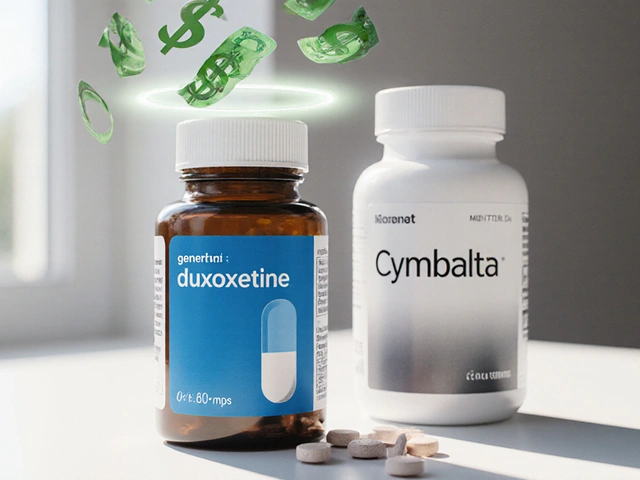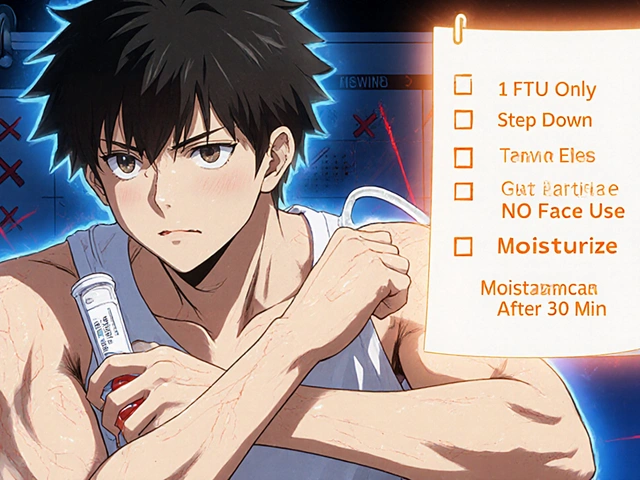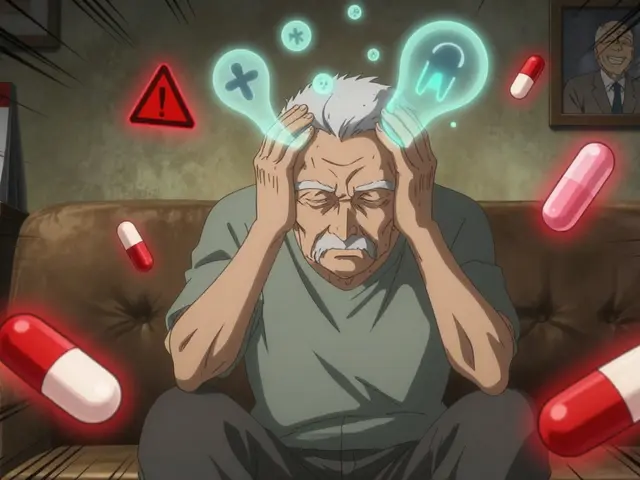If clenbuterol is keeping you wired at night, you’re not imagining it. It’s a stimulant-like beta‑2 agonist with a long tail in the body, so sleep can go sideways fast-racing heart, restless legs, and that relentless 2 a.m. alertness. You can still stack the odds in your favor. This playbook shows how to ease the sleep fallout, spot red flags, and decide when to pause or get help. No magic bullet-just smart moves that work with your biology.
- Clenbuterol acts like a long-lasting stimulant; insomnia is a common side effect.
- Anchor your wake time, cut stimulants, cool and darken your room, and use a short wind-down routine.
- If your resting heart rate is very high, you have chest pain, or severe anxiety, stop and seek medical care.
- Talk to a clinician about safer options; clenbuterol isn’t FDA‑approved for humans in the U.S.
- Small, consistent changes beat one-off fixes-especially with a drug that lingers for ~a day or more.
Why clenbuterol messes with sleep (and how long it lasts)
Clenbuterol stimulates beta‑2 receptors to open airways, but it also revs the sympathetic nervous system-the “go” side. That can mean tremor, palpitations, anxiety, and clenbuterol insomnia. Unlike a cup of coffee, it doesn’t wash out by dinner. Published human pharmacokinetic studies estimate an elimination half‑life roughly in the 25-39 hour range. That’s why one morning dose can echo into the next night.
What does that feel like at bedtime? You lie down, heart still a bit fast, body keyed up, mind alert. Falling asleep takes longer, and when you do, sleep feels light. You may wake early with a jolt. Because of the long half‑life, each day can stack on the next if you dose repeatedly.
Other amplifiers matter:
- Caffeine and other stimulants (pre‑workouts, yohimbine, nicotine) pile on the arousal.
- Late high‑intensity workouts spike adrenaline and core temperature near bedtime.
- Light exposure (bright evening screens, early dawn through thin curtains) shifts your body clock later or wakes you early. In Seattle summers, sunrise blasts the bedroom early-blackout curtains earn their keep.
- Anxiety and stress tie into the same system clenbuterol amps up.
Quick reality check: if you’re feeling chest pain, severe shortness of breath, or your resting heart rate is way up (for many, >120 bpm at rest is a red‑flag range), that’s not “just bad sleep.” Stop and get medical help.
| Thing | Typical duration/half‑life | Why it matters for sleep |
|---|---|---|
| Clenbuterol | ~25-39 hours (human studies) | Can keep you alert into the next night; effects can stack day to day. |
| Caffeine | ~5 hours (varies 3-7) | Afternoon coffee still in your system at bedtime; additive with clenbuterol. |
| Evening light | Clock‑shifts with nightly exposure | Delays melatonin; harder to fall asleep on a stimulated nervous system. |
| High‑intensity exercise | Acute arousal 1-3 hours | Late workouts keep heart rate and temperature up; tougher sleep onset. |
Note: Numbers are typical ranges reported in pharmacology and sleep literature; individuals vary based on genetics, liver function, meds, and timing.
What you can do tonight: a short, step‑by‑step plan
When your system is amped, the goal is simple: lower arousal, lower core temperature, and cut light. Here’s a practical routine you can run tonight.
- Pick a non‑negotiable wake time. Set it and keep it, even after a rough night. This anchors your body clock so tomorrow’s sleep is easier.
- Cut stimulants after late morning. No caffeine, pre‑workout, nicotine, or energy drinks after 11 a.m. Keep hydration up with water and electrolytes, not stimulants.
- Move your workout earlier. If you trained hard this evening, switch tomorrow to morning or early afternoon. Tonight, keep it light: a 20-30 minute walk is perfect.
- Eat a steady, not spicy, dinner. A balanced meal with carbs helps nudge melatonin; heavy fat or very spicy meals can cause reflux and sleep disruption.
- Power down light 60-90 minutes before bed. Dim lights. Set phone to warm/night mode. If you must use screens, wear blue‑light‑blocking glasses.
- Cool the room to ~65°F/18°C. A cool bedroom drops core body temp, which helps sleep onset. Warm feet + cool room is a nice combo-throw on light socks if your feet are cold.
- Take a warm shower 60-90 minutes pre‑bed. Paradoxically, this helps your body dump heat after you step out.
- Run a 10-15 minute wind‑down. Pick one:
- Breathing: 4‑7‑8 (inhale 4s, hold 7s, exhale 8s x4-6) or the “physiological sigh” (two small inhales + long exhale x5-10).
- Body scan: tense then relax each muscle group from toes to jaw.
- Guided audio: a short non‑sleep deep rest (NSDR) or progressive relaxation track.
- Darken and quiet the room. Blackout curtains, eye mask, and, if noise is an issue, a fan or brown‑noise app.
- If you’re still awake after ~20-30 minutes, get up. Don’t fight the sheets. Sit in dim light and do something calm (paper book, gentle stretch). Return when sleepy.
Two extra rules that matter:
- No doomscrolling in bed. Your brain will start to link bed = wakefulness.
- No alcohol “nightcap.” It may knock you out but fragments sleep later and spikes heart rate.
Daytime moves that make tonight easier
What you do from wake‑up to dinner sets up your night, especially with a long‑acting stimulant in the mix.
- Get morning light in your eyes. Go outside within an hour of waking for 5-15 minutes. It anchors your circadian rhythm so melatonin rises on time tonight.
- Hold caffeine until 60-90 minutes after waking. Let adenosine build first. Then stop by late morning, as above.
- Keep a steady meal rhythm. Three balanced meals beat grazing. Include protein earlier and complex carbs at dinner. Your gut hates chaos at night.
- Exercise earlier. If high‑intensity training is non‑negotiable, aim to finish 6+ hours before bed.
- Hydrate through the day, taper at night. Aim for most fluids before 6 p.m. to reduce bathroom trips.
- Mind the stack. Avoid combining clenbuterol with other stimulants (pre‑workouts, ephedrine, high‑dose caffeine, yohimbine, nicotine). Stacking raises heart rate and anxiety, and sleep pays the price.
- Set a 30‑minute “evening buffer.” No intense work or tough conversations right before bed. Write a quick to‑do list so your brain stops spinning.
If early dawn light wakes you too soon, blackout shades are a cheap win. I live in Seattle, and summer sunrise blasts through at an ungodly hour-an eye mask and a $40 blackout curtain gave me back an hour of morning sleep.

Safety first: when to pause, what to ask a clinician, and what to avoid
Clenbuterol is not approved for human use in the United States. It shows up in doping cases and sometimes in contaminated supplements. Insomnia is one piece of a larger safety picture: elevated heart rate, blood pressure spikes, tremor, and, at high doses, serious cardiac risks.
“Clenbuterol is not approved for use in humans in the United States.” - U.S. Food and Drug Administration (FDA)
Practical safety guardrails:
- Red flags-stop and get care now: chest pain or tightness, fainting, severe shortness of breath, new irregular heartbeat, or a resting heart rate that stays very high. These are medical issues, not sleep hygiene problems.
- When to pause and reassess: if insomnia persists beyond a few days, daily function tanks, or anxiety ramps up. A long half‑life means today’s choice affects tomorrow’s sleep.
- Drugs and mixes to avoid without medical advice: additional stimulants (caffeine, ephedrine, yohimbine, high‑stim pre‑workouts), decongestants (like pseudoephedrine), and unverified supplements. Mixing stimulants compounds cardiovascular strain.
- Supplements people often ask about: Some find low‑dose melatonin helpful for falling asleep, and magnesium glycinate is popular for wind‑down routines. These are not cure‑alls and can interact with meds or conditions (e.g., kidney disease). Discuss with a clinician who knows your history.
- Prescription sleep meds: Short‑term options exist, but masking overstimulation can be risky. A clinician may consider them after assessing your heart rate, blood pressure, and interactions. Don’t self‑medicate.
- Athletes: Clenbuterol is prohibited by the World Anti‑Doping Agency (WADA). A positive test can cost you a season-and insomnia will not help your performance either.
This article is general information, not medical advice. If you’re using clenbuterol, a quick conversation with a healthcare professional is the most direct path to safer choices.
Checklists, examples, and quick tools
Sometimes you don’t need theory-you need a simple list to run. Use these as your nightly playbook.
Tonight’s 15‑minute wind‑down (copy/paste):
- Lights dimmed, phone on night mode, no news/apps.
- Bedroom at ~65°F/18°C, blackout curtains closed, eye mask ready.
- Warm shower, then light stretch (5 minutes).
- Breathing: 4‑7‑8 for 4-6 cycles or 10 physiological sighs.
- Short body scan (head to toe, 3 minutes).
- In bed only when sleepy; if still awake after ~20-30 minutes, get up and reset.
Daytime rules that protect your night:
- Morning outdoor light within an hour of waking.
- Last caffeine by 11 a.m. (earlier if sensitive).
- Hard workouts done 6+ hours before bed.
- Balanced dinner; avoid heavy late-night snacking and alcohol.
- Set a 30‑minute stress buffer before lights out.
Two real‑world scenarios:
- You dosed early and still feel wired at midnight. Don’t chase sleep with alcohol. Do a 10‑minute wind‑down, keep the room cool, and accept a shorter night. Keep your wake time. A consistent wake time helps your clock catch up tomorrow.
- You stacked caffeine + pre‑workout + clenbuterol and now you’re buzzing. Hydrate, light walk, no more stimulants, and a long, slow breathing session. If your resting heart rate stays very high, seek care.
What to track (briefly): Keep a 7‑day note of wake time, bedtime, caffeine timing, workout timing, and a 0-10 “wired” score at bedtime. Look for patterns. Fix the easy wins first: stimulants and light.
FAQs and next steps
Does timing the dose earlier help? Earlier is better than later, but the half‑life is long. Even a morning dose can affect the next night. The safest fix is to pause and talk to a clinician.
Is melatonin safe to use with clenbuterol? Low‑dose melatonin is generally considered safe for short‑term use in healthy adults, but it’s not a cure for stimulant‑driven insomnia and can interact with some meds. Ask a clinician who knows your history.
What about antihistamines (like diphenhydramine)? They can make you sleepy but often lead to grogginess and worse sleep quality. They also raise heart rate in some people. Don’t use them to override cardiovascular stimulation.
Can I nap to catch up? If you must, cap it at 20-30 minutes before 3 p.m. Long or late naps can delay bedtime and make the next night harder.
How long until sleep normalizes after stopping? Many people notice improvement within a couple of nights, but because the drug lingers, sleep can take several days to fully settle. Keep wake time consistent and follow the wind‑down routine.
What if I have sleep apnea or anxiety too? Stimulants can worsen both. If you snore loudly, gasp at night, or have daytime sleepiness, get screened for sleep apnea. If anxiety is high, cognitive behavioral strategies (CBT‑I for insomnia) and therapy are more effective long‑term than any pill.
Are there legit medical sources that warn about clenbuterol? Yes-the FDA explicitly states it’s not approved for human use in the U.S., and WADA bans it in sport. Sleep medicine groups like the American Academy of Sleep Medicine recommend behavioral approaches for insomnia as first‑line care.
Next steps / troubleshooting by scenario:
- “I can’t fall asleep at all.” Double down on darkness and cooling. Run the breathing protocol. If heart rate is high at rest or you feel unwell, stop and seek medical care.
- “I fall asleep but wake at 3 a.m.” Keep the room cool, avoid alcohol, and try a 10‑minute NSDR audio to drift back. Keep wake time. Add a bit more complex carbs at dinner tomorrow.
- “I’m fine on weekends, wrecked on weekdays.” Your schedule is swinging. Lock an everyday wake time within a 30‑minute window. Morning light daily.
- “I did all this and still feel terrible.” That’s your cue to pause clenbuterol and see a clinician to check heart rate, blood pressure, and interactions.
One last thing: consistency beats intensity. A dark room, cool air, earlier workouts, and a simple wind‑down will do more for your sleep than any hack-especially when your nervous system is already riding the brake‑less side of the curve.










When you chase a miracle drug like clenbuterol, you willingly invite a cascade of physiological betrayals that turn night into a relentless carnival of nerves. The long‑acting beta‑2 agonist is not a gentle whisper; it shouts through your sympathetic system, keeping your heart thudding like a drumline at a midnight rave. Each dose becomes a ticking time bomb that refuses to defuse until the next sunrise, and the half‑life of 25‑39 hours ensures the aftereffects linger like an unwelcome guest. You start the evening with a hopeful mind, but by the time the clock strikes eleven, your body is still revving on high octane, refusing the quiet cue that signals sleep. The cascade of side effects-palpitations, tremor, anxiety-are not mere nuisances; they are red flags waving frantically at any rational observer. Your brain, already buzzing from the stimulant, refuses to slip into the low‑frequency waves needed for deep rest. Even the slightest exposure to bright screens or a late‑night workout adds fuel to the fire, turning insomnia into an inevitable outcome. If you persist, you will notice a vicious feedback loop: poor sleep heightens cortisol, cortisol heightens heart rate, and the heart refuses to settle. Over time, the strain can morph into chronic hypertension, cardiac arrhythmias, and a host of metabolic disorders that no one signed up for. The moral of the story, dear reader, is that no amount of “hacks” can outwit the fundamental biology of a drug designed to accelerate metabolism. You must either respect the pharmacokinetics and schedule doses far enough apart, or you must abandon the compound altogether. Use the practical steps outlined-anchor wake time, dim the lights, cool the room, and incorporate a wind‑down routine-as a shield, not a miracle cure. Remember, consistency beats intensity every single time. If your resting heart rate stubbornly hovers above 120 beats per minute, that is the universe telling you to stop and seek professional help. And above all, never forget that clenbuterol is not FDA‑approved; it is a chemical with a reputation that precedes it, demanding caution, respect, and ultimate responsibility for your own health.
Wow, that was a full‑blown epic, but the takeaway is simple: keep the bedroom dark, cool, and screen‑free, and give your body a regular wake‑up time. Those tiny habits add up faster than any “quick fix.”
From a practical standpoint, the most effective short‑term fix is a 4‑7‑8 breathing routine right before you lie down, combined with a quick warm‑shower‑then‑cool‑room trick. This lowers core temperature and activates the parasympathetic nervous system, which can offset the stimulant effect of clenbuterol enough to at least get you into light sleep.
Just quit the drug.
It is imperative to recognize that the pharmacokinetic profile of clenbuterol dictates a prolonged sympathomimetic influence, rendering conventional sleep hygiene measures insufficient without concomitant dose adjustment or cessation. The literature unequivocally demonstrates that heart rate elevation persisting beyond 120 bpm at rest constitutes a clinical red flag necessitating immediate medical evaluation.
Considering cultural perspectives, many athletes in regions where clenbuterol is less regulated view it as a performance shortcut, but the global sporting community condemns its use due to the very same health risks outlined here. Sharing personal anecdotes from diverse backgrounds reinforces the universal truth: no shortcut beats a solid, well‑structured sleep regimen.
you’re right about the need for consistent bedtime it helps reset the circadian rhythm and the light exposure tip is gold i’ll try the blackout curtains tonight
Ever wonder if the night itself is conspiring against us, whispering secrets of the universe while we struggle to close our eyes? 🤔 The very act of forcing a hyper‑stimulated brain into surrender is like asking a hurricane to calm down for a tea party. Yet, in that chaos, there lies a hidden lesson: the body is a canvas, and every late‑night dose of clenbuterol paints a stroke of neon across the night sky of our psyche. Embrace the absurdity, dear night‑owls, and let the cool air be your therapist, the dim lights your sermon, and the gentle hum of a fan your mantra. 🌙
Practical tip: set a timer for 60 minutes before bedtime to start dimming lights automatically, and keep a glass of water by the bed to prevent midnight bathroom trips caused by dehydration from caffeine.
Stop ignoring the red‑flag heart rate; your body is screaming for help.
😃 i’ll try the cool shower tip it's not a big deal but i think it’ll help 💤
From a neutral standpoint, the advice to align morning sunlight exposure with a consistent wake‑time is solid and universally applicable regardless of whether you’re on clenbuterol or not.
Sure, the “official” guidance works fine-until you realize the pharma industry is pulling strings behind the curtain, feeding us stimulants to keep us docile while they profit. Wake up, people!
You’ve got this! Even if clenbuterol tries to hijack your night, you can reclaim your sleep with these simple steps-just stay consistent and trust the process.
Oh brilliant, another bedtime checklist-because we’ve all needed a 17‑item to‑do list to fall asleep. 🙄
Imagine, if you will, that each clenbuterol molecule is a tiny rebel, marching against the kingdom of melatonin, demanding the night to stay awake. The rebellion is fierce, but the kingdom’s walls-cool air, darkness, rhythmic breathing-are sturdy fortifications. When you align your nightly rituals with these fortresses, you turn the tide, escorting those rogue molecules into exile. It’s not magic; it’s strategy, painted in vivid hues of science and habit.
Totally agree-keep it simple, cool the room, and stick to the routine. Works every time.